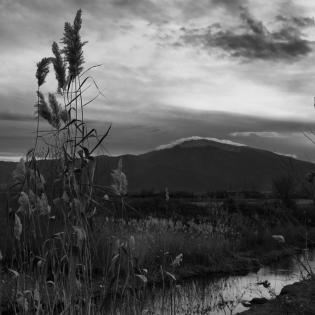Using Our Gifts for Good
Using the inspiration of Amanda Gorman’s poem “Earthrise,” participants consider what it means to act in ways that honor the Earth. Individuals identify and publicly commit to take action that works to help humans and nature flourish together.
The learners will...
- Analyze the poem “Earthrise” by Amanda Gorman
- Create an action plan to intentionally act in ways that honors nature
- “Earthrise” by Amanda Gorman
- Graphic Organizer for Close Reading - copy from Google docs
- Quote from Robin Wall Kimmerer - Google doc copy from this link
- Strategies for Close Reading
- Resources from Learning to Give to support philanthropic action
Instructions
Session One
The poem "Earthwise" makes a powerful impact through hearing and watching Amanda Gorman perform. Participants complete the graphic organizer while watching the video of Amanda Gorman’s poem “Earthrise” in a three-part “close read” of the poem.
For the first read, tell participants to listen for the general meaning of the poem. After sharing the poem, allow participants time to individually reflect.
The goal of the second reading is to analyze the meaning of the poem. What was the author’s purpose and central theme of the poem?
Listen to the poem for a third time. Participants focus on making personal connections to the poem and looking for evidence in the text to support their analysis.
Finally, with a partner, consider the connections between Amanda Gorman’s poem and Robin Wall Kimmerer’s Ted Talk from Lesson One. Reflect on how an individual can act in responsible ways that honor our planet. What lessons can we learn about sustainable living by studying nature?
After the "close read," debrief as a whole group. Invite participants to reflect on how we might use what we’ve learned in the future.
Session Two
Share Robin Wall Kimmerer’s quote from Braiding Sweetgrass: Indigenous Wisdom, Scientific Knowledge, and the Teachings of Plants:
The most important thing each of us can know is our unique gift and how to use it in the world. Individuality is cherished and nurtured, because, in order for the whole to flourish, each of us has to be strong in who we are and carry our gifts with conviction, so they can be shared with others.
Reflect on Kimmerer's call to action. In what ways might we consider using our unique gifts to help Earth flourish?
Putting it all together.
In what ways can individuals take action to honor our relationship with nature through the use of our time, talent and treasure? Participants identify and commit to specific individual actions, which may include volunteering, advocacy, or changes in lifestyle.
Not sure about where to begin? Explore these ideas: Patagonia, Plastic Bottles, The Story of Stuff, Learning to Give’s Tote Challenge.
Invite participants to create a visual display of a public statement of commitment.
They may communicate their plan of action using photography, video, works of art, posters, or poetry.
Conduct a gallery walk of finished projects. After viewing, ask are there additional actions you are considering taking?
A group may put their visual displays together in slides and share with a public audience. Learning to Give is interested in sharing their work on their social media @learningtogive. Share photos or videos of your final projects with Learning to Give at [email protected].
Handouts
Philanthropy Framework
-
Strand PHIL.IV Volunteering and Service
-
Standard VS 02. Service and Learning
-
Benchmark MS.1 Select a service project based on interests, abilities and research.
-
Benchmark HS.1 Select a service project based on interests, abilities, and research.
-
-
